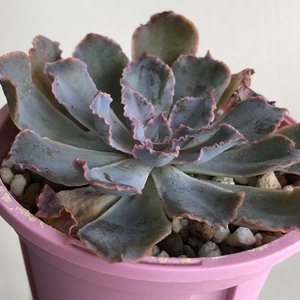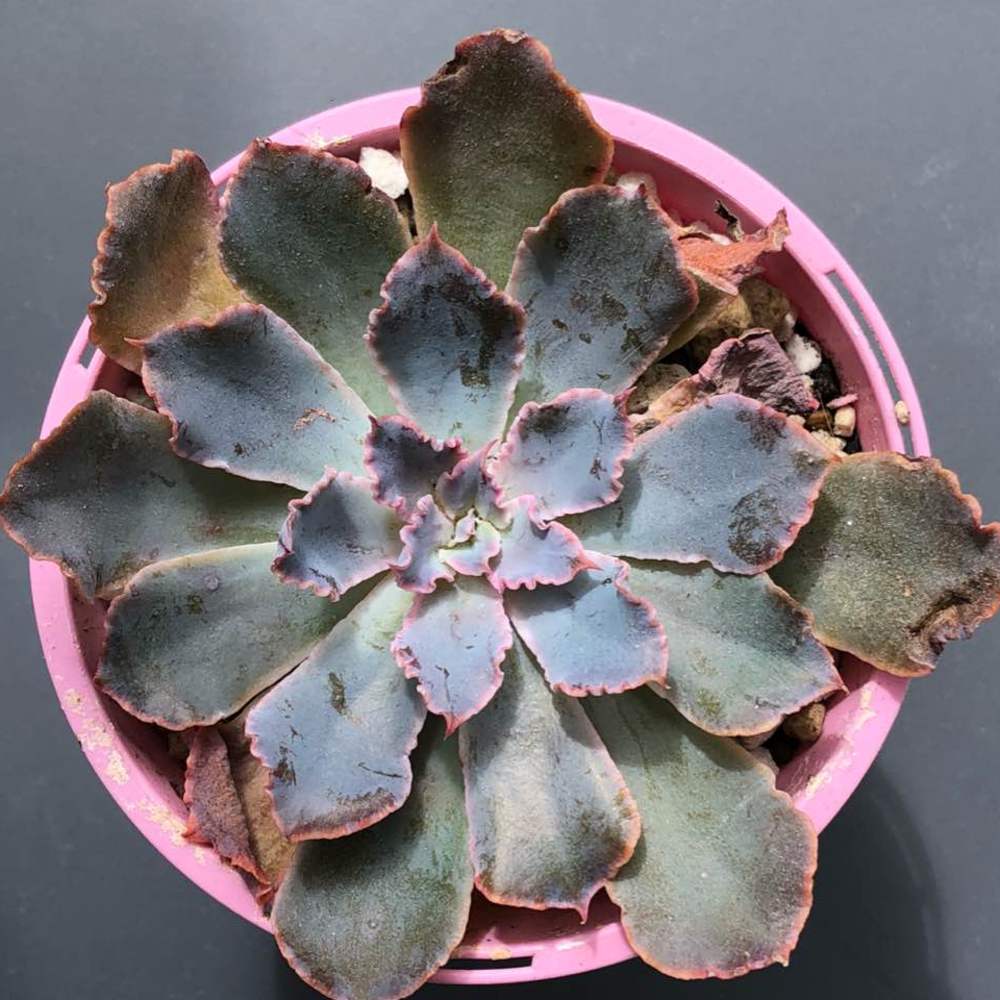Plant Experience
Detail
Echeveria ‘Neon Breakers’ is a rosette-forming succulent with wavy, crinkled edges that are an unusual leaf texture, unlike other Echeveria. Its rosettes can grow up to 8 inches (20 cm) in diameter. It characterized by its intense, colorful leaves. Once planted, the leaves rosettes begin as a blue-green with faint pink at the tips. As it receive continuous full to partial sun, its colors transform into its own, vivid sunset. The blue-green reverts to a deep purple and a magenta, pink hue at the tips of its leaves. In bloom, during late summer and early fall, its colors heighten and tend to become even more vivid. Purplish stems grow vertically while producing bright pink flowering buds.
How to Grow and Care
Most of the common Echeveria species are not complicated succulents to grow, provided you follow a few basic rules. First, be careful never to let water sit in the rosette as it can cause rot or fungal diseases that will kill the plant. Additionally, remove dead leaves from the bottom of the plant as it grows. These dead leaves provide a haven for pests, and Echeveria are susceptible to mealy bugs. As with all succulents, careful watering habits and plenty of light will help ensure success.
Most Echeveria can be easily propagated from leaf cuttings, although a few are better from seeds or stem cuttings. To propagate a leaf cutting, place the individual leaf in a succulent or cacti mix and cover the dish until the new plant sprouts.
Repot as needed, preferably during the warm season. To repot a succulent, make sure the soil is dry before repotting, then gently remove the pot. Knock away the old soil from the roots, making sure to remove any rotted or dead roots in the process. Treat any cuts with a fungicide.
How to Grow and Care
Most of the common Echeveria species are not complicated succulents to grow, provided you follow a few basic rules. First, be careful never to let water sit in the rosette as it can cause rot or fungal diseases that will kill the plant. Additionally, remove dead leaves from the bottom of the plant as it grows. These dead leaves provide a haven for pests, and Echeveria are susceptible to mealy bugs. As with all succulents, careful watering habits and plenty of light will help ensure success.
Most Echeveria can be easily propagated from leaf cuttings, although a few are better from seeds or stem cuttings. To propagate a leaf cutting, place the individual leaf in a succulent or cacti mix and cover the dish until the new plant sprouts.
Repot as needed, preferably during the warm season. To repot a succulent, make sure the soil is dry before repotting, then gently remove the pot. Knock away the old soil from the roots, making sure to remove any rotted or dead roots in the process. Treat any cuts with a fungicide.
Album (2)


kensong
2018-08-31

From LS Succulents


kensong
2018-08-31

This is my first growing diary.


Elite Article













